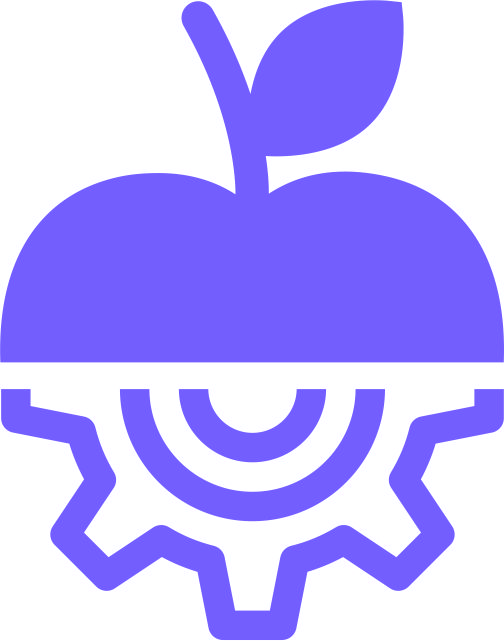Abstract
Despite its high demand in molecular diagnostics, the bacterial DNA extraction from dairy products remains an understudied area. The effectiveness of different DNA extraction methods for detecting microorganisms in food matrices needs a comprehensive comparative analysis. The article introduces a comparative analysis of bacterial DNA extraction methods from goat milk and its products.The research included samples of raw, pasteurized, and powdered goat milk, as well as a goat milk yogurt and a goat milk cheese. The nucleic acid tests relied on five commercially available kits based on 1) a silica sorbent (DNA-Sorb-S-M), 2) salt precipitation of nucleic acids (DNA-Extran-2), 3) spin columns with a silica filter (K-Sorb), 4) magnetic particles (GMO-MagnoSorb), 5) a combination of phenol-chloroform extraction and silica sorbent (Sorb-GMO-B). The concentration and purity of DNA preparations were analyzed using standard fluo- and spectrometric methods. The isolated total DNA was used as a template for amplification of bacterial 16S rRNA gene fragments.
All kits were able to isolate bacterial DNA from all samples but goat milk powder, where the lack of amplification could be due to some technological production features or DNA degradation during extraction. The best results belonged to the method that combined phenol-chloroform extraction and silicon sorbent, especially for complex matrices. The method with silica sorbent without organic solvents was second in efficiency. The analysis of the yield and purity of bacterial DNA showed that some methods were less effective with milk matrices.
The method of phenol-chloroform extraction with adsorption on a silicon sorbent proved to be the most productive and universal method for extracting DNA from goat milk and its products. However, other protocols could be calibrated for specific viscosity, density, bacterial cell count, complex protein profile, exopolysaccharide/fat matrices of microbial encapsulation, etc.
Keywords
Molecular genetic methods, PCR, DNA extraction methods, nucleic acid, dairy products, goat milkFUNDING
The research was carried out using subsidies for the implementation of the State Assignment FNSS-2025-0002 “Development of methodological foundations of dairy product monitoring with elements of clustering identification, forming a flexible analytical evaluation system under conditions of global traceability” on the basis of All-Russian Dairy Research Institute.REFERENCES
- Progress towards achieving the sustainable development goals. United Nations. The General Assembly and Economic and Social Council. [cited 2024 Oct 03]. (In Russ.) Available from: https://unstats.un.org/sdgs/files/report/2024/secretary-general-sdg-report-2024--RU.pdf
- Grosso G, Mateo A, Rangelov N, Buzeti T, Birt C. Nutrition in the context of the sustainable development goals. European Journal of Public Health. 2020;30(1):i19–i23. https://doi.org/10.1093/eurpub/ckaa034
- Dairy’s impact on reducing global hunger. IFCN Dairy Research Network. [cited 2024 Oct 03]. Available from: https://ifcndairy.org/dairys-impact-on-reducing-global-hunger/
- Glazunova OA, Moiseenko KV, Begunova AV, Rozhkova IV, Fedorova TV. Lactobacilli starter probiotic cultures: Functional and genomic properties. Topical biotechnology. 2022;(1):73–77. (In Russ.) https://elibrary.ru/SLTOBG
- Yurova EA, Filchakova SA, Zhizhin NA. Use of PCR-analysis methods for evaluating composition and properties of milk and dairy products. Izvestiya of Timiryazev agricultural academy. 2020;(6):16–25. (In Russ.) https://doi.org/10.26897/0021-342X-2020-6-16-25
- Yurova EA, Zhizhin NA, Filchakova SA. Molecular genetic methods of analysis to identify the species affiliation of the raw material composition in food products. Vestnik of MSTU. 2020;23(3):214–223. (In Russ.) https://elibrary.ru/HUZYAY
- Lazareva EG, Khan AV, Fomenko OYu. Research of methods of DNA extraction from raw milk. Dairy Industry. 2023;(5):115–116. (In Russ.) https://doi.org/10.21603/1019-8946-2023-5-8
- Usman T, Yu Y, Liu C, Fan Z, Wang Y. Comparison of methods for high quantity and quality genomic DNA extraction from raw cow milk. Genetics and Molecular Research. 2014;13(2):3319–3328. https://doi.org/10.4238/2014.April.29.10
- Benitez-Velásquez M, Cabrera R, Ríos-Tobón S, Isaza JP, Gutiérrez LA. Assessment of four different DNA extraction methodologies for the molecular detection of phage λ and Bacillus sp. in raw bovine milk samples. International Dairy Journal. 2024;151:105862. https://doi.org/10.1016/j.idairyj.2023.105862
- Abdelhamed MFM, Zaid RH, Ibrahim MT, Almansoori AE. Magnetic beads carried over in extracted DNA elution from mastitis cow milk. International Journal of Current Microbiology and Applied Sciences. 2024;13(1):73–80. https://doi.org/10.20546/ijcmas.2024.1301.009
- d’Angelo F, Santillo A, Sevi A, Albenzio M. Technical note: A simple salting-out method for DNA extraction from milk somatic cells: Investigation into the goat CSN1S1 gene. Journal of Dairy Science. 2007;90(7):3550–3552. https://doi.org/10.3168/jds.2007-0149
- Liu YF, Gao JL, Yang YF, Ku T, Zan LS. Novel extraction method of genomic DNA suitable for long-fragment amplification from small amounts of milk. Journal of Dairy Science. 2014;97(11):6804–6809. https://doi.org/10.3168/jds.2014-8066
- Amills M, Francino O, Jansa M, Sanchez A. Isolation of genomic DNA from milk samples by using Chelex resin. Journal of Dairy Research. 1997;64(2):231–238. https://doi.org/10.1017/s0022029997002161
- Goat milk product market overview, 2023–28. Research and Markets. The World’s Largest Market Research Store. [cited 2024 Oct 03]. Available from: https://www.researchandmarkets.com/reports/5853411/goat-milk-product-market-overview-28d
- ALKaisy QH, Al‐Saadi JS, Al‐Rikabi AKJ, Altemimi AB, Hesarinejad MA, et al. Exploring the health benefits and functional properties of goat milk proteins. Food Science & Nutrition. 2023;11(10):5641–5656. https://doi.org/10.1002/fsn3.3531
- Marsh AJ, O'Sullivan O, Hill C, Ross RP, Cotter PD. Sequencing-based analysis of the bacterial and fungal composition of kefir grains and milks from multiple sources. PLOS One. 2013;8(7):e69371. https://doi.org/10.1371/journal.pone.0069371
- Bhoyar L, Mehar P, Chavali K. An overview of DNA degradation and its implications in forensic caseworks. Egyptian Journal of Forensic Sciences. 2024;14:15. https://doi.org/10.1186/s41935-024-00389-y
- Khan AV, Koval DD, Lazareva EG, Fomenko OYu. Comparative analysis of simplex and duplex PCR for detection of adulteration of goat milk and its heat-treated products. Food Metaengineering. 2024;2(3):12–24. (In Russ.) https://doi.org/10.37442/fme.2024.3.63
- Huang X, Duan N, Xu H, Xie TN, Xue YR, et al. CTAB-PEG DNA extraction from fungi with high contents of polysaccharides. Molecular Biology. 2018;52(4):718–726. (In Russ.) https://doi.org/10.1134/S0026898418040080
- Lick S, Keller M, Bockelmann W, Heller KJ. Optimized DNA extraction method for starter cultures from yoghurt. Milchwissenschaft. 1995;51(4):183–186.

